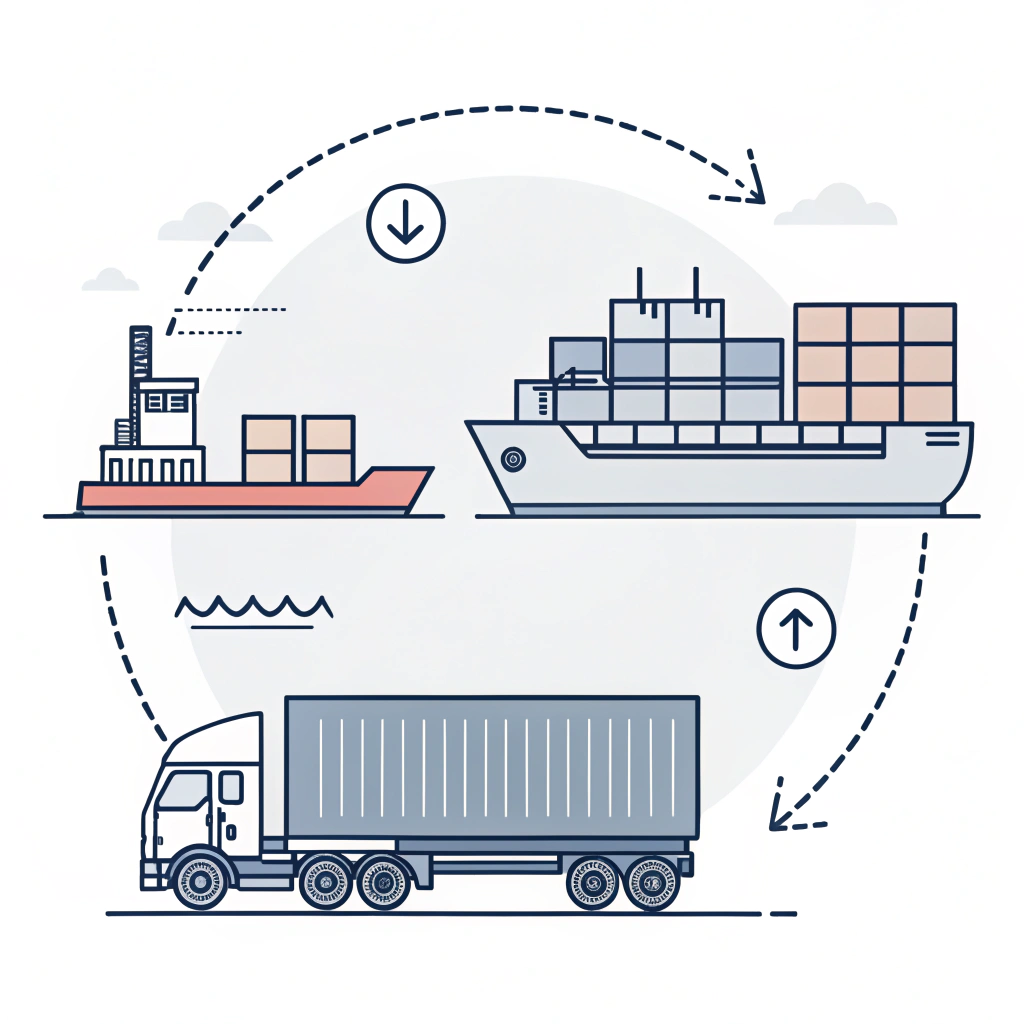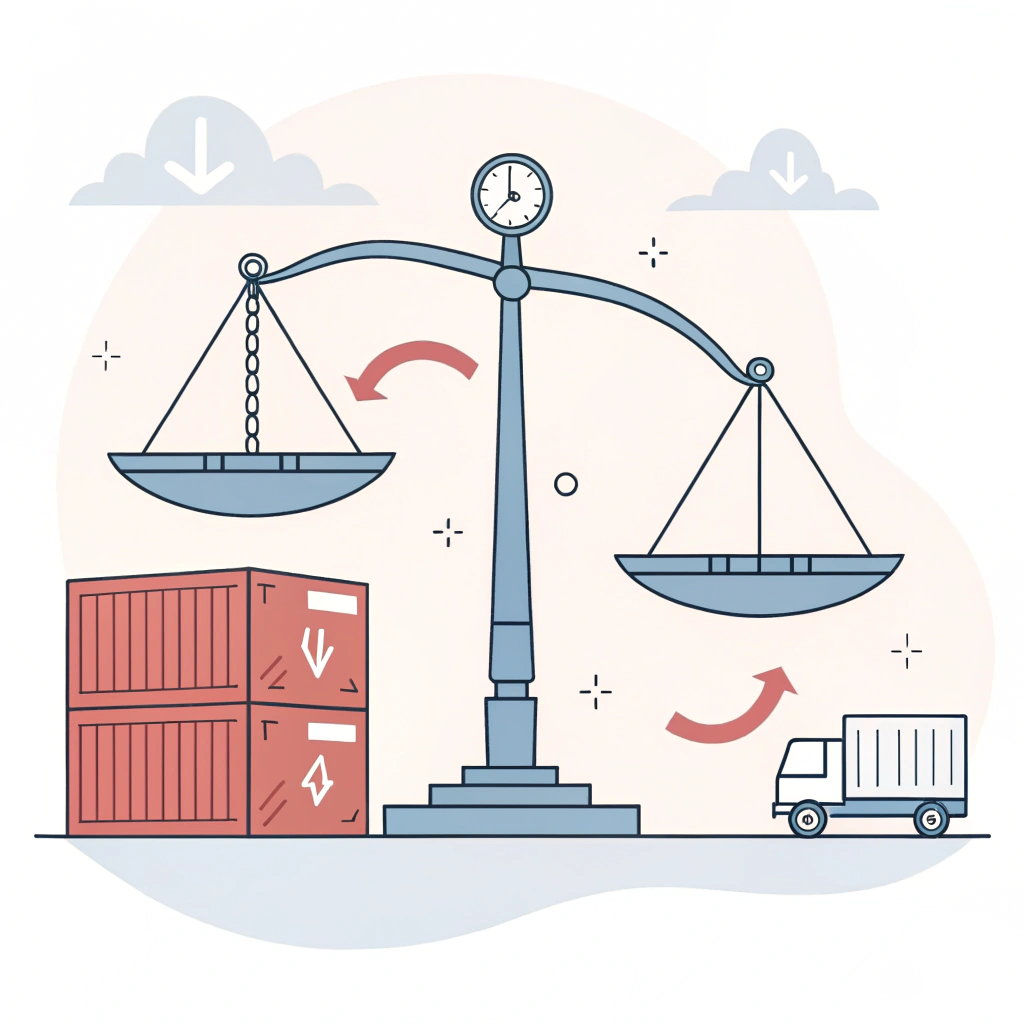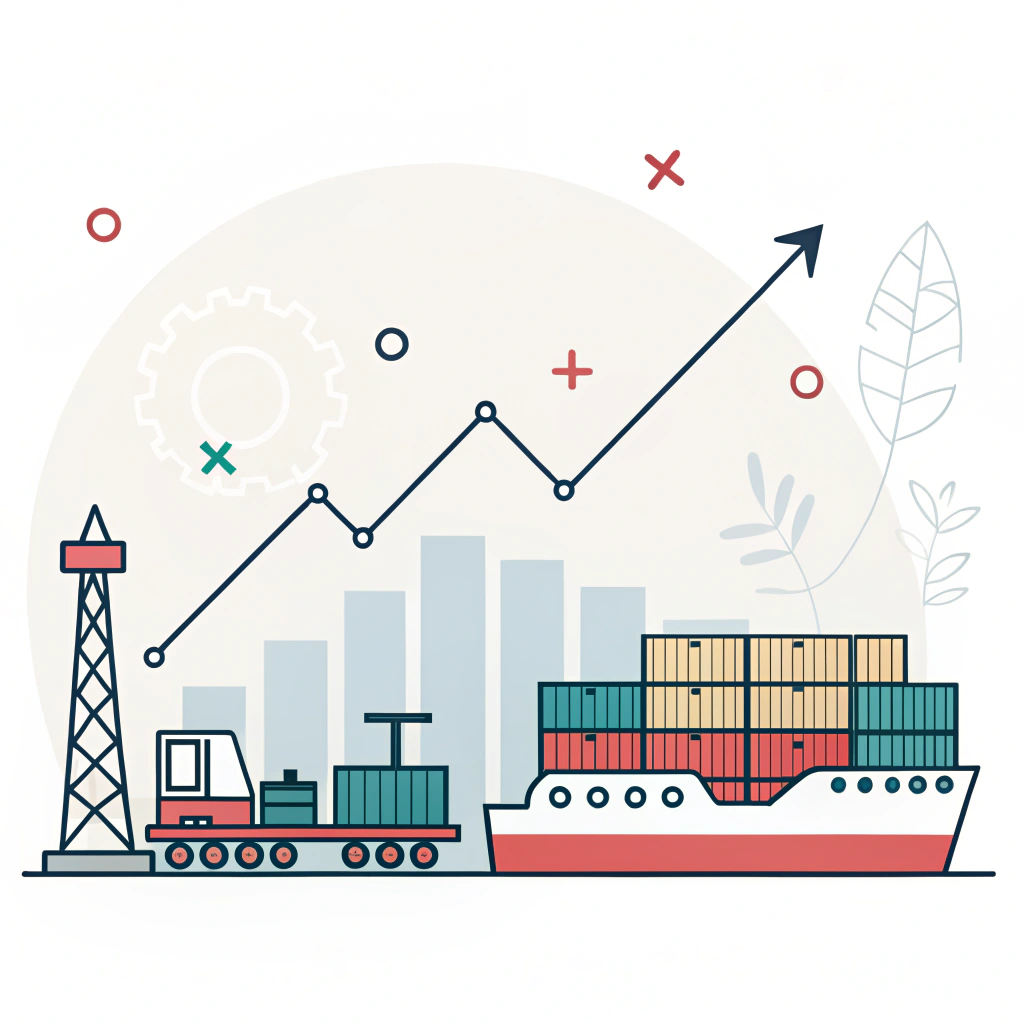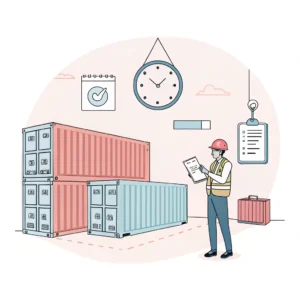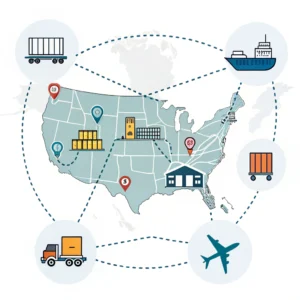In summary, DAP (Delivered at Place) requires the seller to deliver the goods to a specified destination while the buyer handles import clearance and related duties, whereas DDP (Delivered Duty Paid) places the entire delivery and customs clearance responsibility on the seller, including the payment of import duties and taxes.
When managing international shipping, knowing the nuances of Incoterms1 such as DAP and DDP is essential. These terms outline the division of responsibilities, risks, and costs between buyers and sellers. In the context of industrial shipping, clarity on these terms can help reduce unexpected costs and delays, helping your company optimize its supply chain2.
Incoterms, short for International Commercial Terms, are sets of internationally recognized rules published by the International Chamber of Commerce. They define the responsibilities of buyers and sellers for the delivery of goods under sales contracts. Among these, DAP and DDP are commonly used for industrial shipments as they directly affect customs clearance protocols, cost allocation, and risk management throughout the shipping process.
-
DAP (Delivered at Place):
Under DAP, the seller is responsible for delivering the goods to a named destination (which could be a terminal, warehouse, or any specific location agreed upon in the contract). The seller bears the costs and risks incurred in bringing the goods to the designated place. However, when the goods arrive, it is the buyer's responsibility to handle import customs clearance3, duties, taxes, and any other import fees. -
DDP (Delivered Duty Paid):
DDP is the most seller-friendly term. The seller is responsible for almost all aspects of the shipping process, including transporting the goods to the buyer's location, taking care of all export and import formalities, and paying any necessary duties, taxes, and charges. This term minimizes risk and additional responsibilities for the buyer but often increases the upfront cost of the shipment.
To effectively compare DAP and DDP, it is valuable to break down the responsibilities, costs, and risks associated with each term. The following table provides an overview:
| Aspect | DAP (Delivered at Place) | DDP (Delivered Duty Paid) |
|---|---|---|
| Delivery Point | Seller delivers to a specified destination | Seller delivers directly to buyer’s door |
| Customs Clearance | Buyer handles import clearance | Seller completes both export and import customs clearance |
| Payment of Duties and Taxes | Buyer pays import duties, taxes, and fees | Seller pays all import duties, taxes, and additional charges |
| Risk Transfer | Risk transfers to buyer upon delivery | Risk remains with seller until goods are received by buyer |
| Cost Implications | Lower upfront cost for seller but potentially higher risk for buyer in customs procedures | Higher upfront cost generally borne by seller due to added responsibilities |
| Documentation Requirements | Buyer needs to prepare and submit import documents | Seller prepares all necessary shipping and import documents |
When using DAP, the seller controls the transportation process until the goods reach the agreed destination. This means the seller manages major aspects of the journey such as export documentation, freight transport, and insurance up to the point of delivery. However, once the goods are offloaded at the destination, the buyer must ensure that customs clearance is handled efficiently.
In contrast, DDP requires the seller to maintain control over the entire delivery process, including both export and import procedures. This ensures that goods are delivered ready for unloading, with all barriers minimized. However, this full-service approach means that the seller must be well-versed in the complex import regulations of the destination country.
From a pricing perspective, DAP may appear less expensive to the seller since they are not accountable for import duties and taxes. However, this can lead to unpredictability in total costs for the buyer if local import charges fluctuate or are subject to unexpected regulatory changes.
With DDP, sellers incorporate all anticipated costs—freight, duties, taxes, and handling fees—into their final price. Although this may increase the initial quote, it significantly reduces the buyer’s financial exposure to variable costs later in the process. For many buyers, particularly in industrial shipping contexts, the predictability of total delivered cost is a critical factor in decision-making.
3. Risk Management4 and Legal Implications
In terms of risk management, the key difference lies in the point of risk transfer. Under DAP, risk transfers at the point of delivery. This requires buyers to have robust systems in place to manage unexpected costs and delays due to customs clearance. Legal contracts should clearly state the exact delivery location to avoid disputes over when the responsibility shifts from seller to buyer.
On the other hand, DDP minimizes buyer risk by ensuring that the seller is legally and contractually accountable for delivering a fully cleared, duty-paid shipment. This comprehensive approach reduces the likelihood of disputes but increases the seller’s exposure to risks associated with misinterpretation of foreign customs laws. Therefore, sellers opting for DDP need to conduct thorough market and regulatory research before committing to this term.
Consider a manufacturing company in China shipping industrial machinery to a facility in the United States. If the shipment adheres to DAP terms, the seller ensures the machinery arrives at the designated port or warehouse in the US. The buyer then handles the import process, paying any required duties and taxes. With this setup, the buyer needs to work closely with a competent customs broker5 to avoid delays.
Alternatively, if the same shipment is conducted under DDP terms, the seller manages the entire delivery process, including navigating the US customs process and paying for all duties. This can offer peace of mind to the buyer but may involve a premium cost and potentially longer delivery times if the seller is not fully aligned with the destination country’s logistical nuances.
When negotiating shipping contracts, it is crucial for both buyers and sellers to clearly define which Incoterm will be applied. Here are some practical guidelines:
-
For Buyers:
- Evaluate your in-house capacity to handle import customs, documentation, and potential delays.
- If you lack the in-house expertise or resources, consider negotiating a shipment under DDP to mitigate risk and streamline operations.
- Always confirm that all costs, including ancillary fees at the point of import, are explicitly addressed in agreements.
-
For Sellers:
- Assess the potential impact on margins when opting for DDP due to additional risk and cost absorption.
- Ensure that your logistics network and partners are capable of managing comprehensive customs clearance.
- Consider adding contractual clauses that allow for adjustments in the event of unexpected duties increases or regulatory changes.
To better assist in making a decision, companies should perform a detailed cost estimation analysis. Below is an example process outline:
| Step | DAP Consideration | DDP Consideration |
|---|---|---|
| Initial Freight Cost | Seller quotes transport up to agreed delivery destination | Seller quotes transport including customs clearance |
| Customs & Duties | Buyer estimates local import duties and tariffs | Seller includes these charges in final cost |
| Risk Mitigation | Buyer needs contingency for potential import delays | Seller bears risk of delay due to import procedures |
| Agreement Flexibility | More flexibility for buyer-managed logistics | Fixed price provides more spend predictability for buyers |
Companies can use this outline to simulate different scenarios, ensuring that every cost factor, including contingencies, is carefully evaluated. It is important to collaborate closely with experienced freight forwarders and customs brokers to ensure that the planning is informed by real-world logistics and regulatory data.
Over the past several years, international trade has seen an increasing emphasis on transparent cost structures and supply chain resilience. In this context, many companies choose DDP to minimize the uncertainties associated with import costs. Market data indicates that while initial costs under DDP may be higher, the avoided risks often lead to long-term savings by reducing order disruptions and administrative overhead.
Industry surveys have also shown that buyers who opt for DDP often experience higher customer satisfaction due to the seamless experience of receiving goods without having to manage complex customs procedures. This is especially relevant in industrial shipping, where delays can lead to significant operational setbacks.
For logistics managers, freight forwarders, and industry professionals, understanding the distinctions between DAP and DDP is pivotal to reducing financial risks and optimizing the supply chain. Here are some key takeaways:
- If you prefer control over the local import process and have capable in-house or third-party expertise, DAP may be the preferable option.
- If minimizing buyer exposure to customs delays and ensuring that all delivery-related costs are locked in upfront is a priority, DDP is likely the better choice.
- Always incorporate clear contractual clauses and risk mitigation strategies regardless of the chosen Incoterm.
- Stay informed about regulatory changes in key markets—a dynamic approach will help manage the complexities associated with international shipping.
- Engage with seasoned freight forwarders and customs brokers who can provide tailored guidance based on your company’s specific needs.
Taking these steps will help secure a smoother and more predictable shipping process, thereby supporting overall business efficiency and growth.
Is DAP more expensive than DDP?
While DDP is typically more expensive due to the comprehensive service it offers—covering all duties, taxes, and import-related fees—the full-service approach can also lead to higher customer satisfaction. This is because buyers receive a streamlined and hassle-free delivery experience, ultimately supporting better revenue outcomes over time.
Who pays duty on DAP shipping terms?
Under DAP, the buyer is responsible for paying import duties, taxes, and customs clearance fees once the goods are delivered to the agreed destination, while the seller covers all other costs up to that point.
-
Incoterms: Reading this article helps you understand the standardized international trade terms that clearly define the responsibilities of buyers and sellers, ensuring smoother cross-border transactions. ↩
-
supply chain: Reading this article gives you a deeper understanding of how to optimize and manage the flow of goods, information, and finances in your business processes. ↩
-
customs clearance: Reading this article offers insights into the processes and regulatory requirements for importing goods, helping you navigate and optimize customs procedures effectively. ↩
-
risk management: Reading this article provides valuable strategies for identifying, assessing, and mitigating risks in international shipping, crucial for maintaining supply chain resilience. ↩
-
customs broker: Reading this article explains the role and benefits of partnering with a customs broker, a key professional who helps ensure compliance and smooth import procedures. ↩


